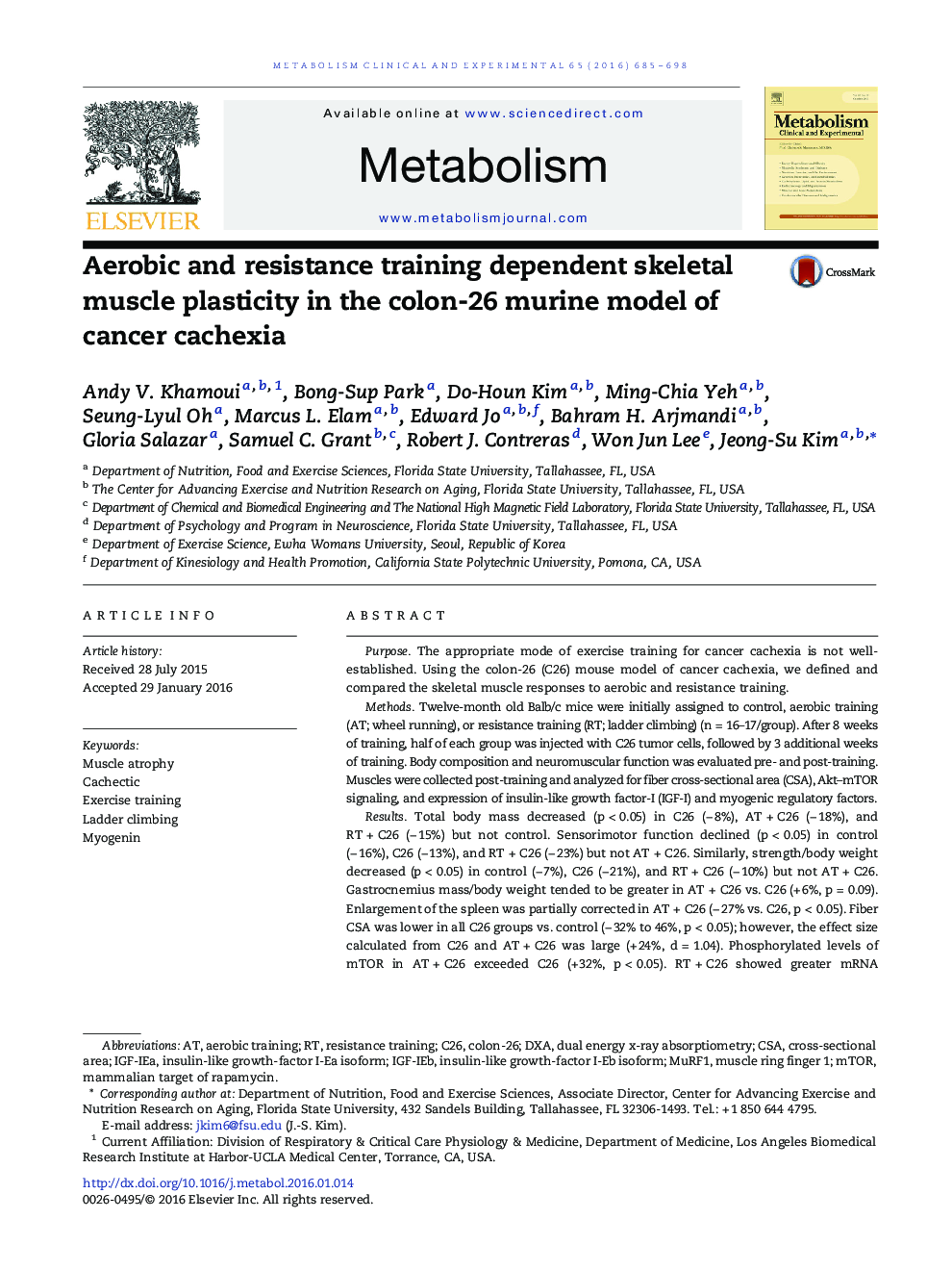| کد مقاله | کد نشریه | سال انتشار | مقاله انگلیسی | نسخه تمام متن |
|---|---|---|---|---|
| 2805467 | 1157055 | 2016 | 14 صفحه PDF | دانلود رایگان |
PurposeThe appropriate mode of exercise training for cancer cachexia is not well-established. Using the colon-26 (C26) mouse model of cancer cachexia, we defined and compared the skeletal muscle responses to aerobic and resistance training.MethodsTwelve-month old Balb/c mice were initially assigned to control, aerobic training (AT; wheel running), or resistance training (RT; ladder climbing) (n = 16–17/group). After 8 weeks of training, half of each group was injected with C26 tumor cells, followed by 3 additional weeks of training. Body composition and neuromuscular function was evaluated pre- and post-training. Muscles were collected post-training and analyzed for fiber cross-sectional area (CSA), Akt–mTOR signaling, and expression of insulin-like growth factor-I (IGF-I) and myogenic regulatory factors.ResultsTotal body mass decreased (p < 0.05) in C26 (− 8%), AT + C26 (− 18%), and RT + C26 (− 15%) but not control. Sensorimotor function declined (p < 0.05) in control (− 16%), C26 (− 13%), and RT + C26 (− 23%) but not AT + C26. Similarly, strength/body weight decreased (p < 0.05) in control (− 7%), C26 (− 21%), and RT + C26 (− 10%) but not AT + C26. Gastrocnemius mass/body weight tended to be greater in AT + C26 vs. C26 (+ 6%, p = 0.09). Enlargement of the spleen was partially corrected in AT + C26 (− 27% vs. C26, p < 0.05). Fiber CSA was lower in all C26 groups vs. control (− 32% to 46%, p < 0.05); however, the effect size calculated from C26 and AT + C26 was large (+ 24%, d = 1.04). Phosphorylated levels of mTOR in AT + C26 exceeded C26 (+ 32%, p < 0.05). RT + C26 showed greater mRNA expression (p < 0.05) of IGF-IEa (+ 79%) and myogenin (+ 126%) with a strong tendency for greater IGF-IEb (+ 127%, p = 0.069) vs. control.ConclusionsAerobic or resistance training was unable to prevent tumor-induced body weight loss. However, aerobic training may have preserved function, reduced the inflammatory response of the spleen, and marginally rescued muscle mass possibly through activation of mTOR. Aerobic training may therefore have therapeutic value for patients with cancer cachexia. In contrast, resistance training induced the expression of genes associated with muscle damage and repair. This gene response may be supportive of excessive stress generated by high resistance loading in a tumor-bearing state.
Journal: Metabolism - Volume 65, Issue 5, May 2016, Pages 685–698
